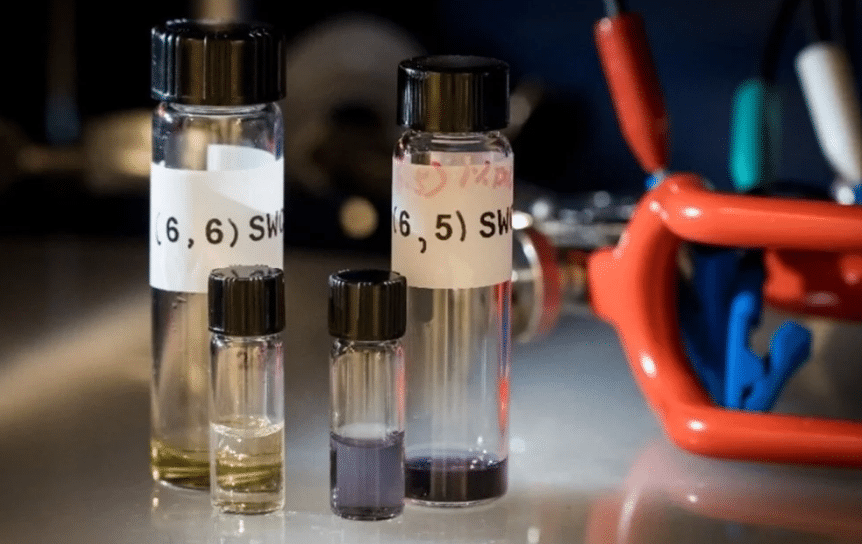This advancement in nanotechnology, which involves precisely controlling nanotube chirality, could revolutionize medical diagnostics by enhancing biosensor sensitivity for applications like hormone level monitoring and disease detection.

Scientists at the University of Turku, Finland, have made a significant breakthrough in nanotechnology by successfully refining single-wall carbon nanotubes (SWCNTs) for highly accurate sensor applications. These nanotubes, composed of a single atomic layer of graphene, hold immense potential for detecting biological markers at extremely low concentrations. However, a major challenge has been the manufacturing process, which produces a mix of conductive and semi-conductive nanotubes with varying chiralities—the specific way the graphene sheet is rolled into a cylindrical structure. Since chirality dictates a nanotube’s electrical and chemical properties, distinguishing between different types is essential for optimizing their functionality.
Collegium Researcher Han Li has developed a method to separate nanotubes based on chirality, enabling researchers to analyze their distinct electrochemical properties. In this study, the team successfully differentiated between two nanotubes with nearly identical chirality and identified key differences in their performance as sensor materials. Unlike conventional sensors that combine nanotubes with surfactants, this study focused on sensors made entirely of purified nanotubes. By precisely controlling nanotube concentration, the researchers conducted direct comparisons between different chiralities.
A groundbreaking finding from the study revealed that one type of nanotube (6.5) was significantly more effective than another (6.6) at adsorbing dopamine—a critical capability for detecting substances in minuscule concentrations. Doctoral researcher Ju-Yeon Seo emphasized the importance of this discovery, stating, “By precisely controlling the properties of carbon nanotubes, we can fine-tune sensor materials to detect specific substances more accurately.”
The implications of this research extend beyond dopamine detection. Current biosensors monitor blood glucose levels, but the University of Turku’s team aims to develop next-generation sensors capable of detecting biological markers, such as female hormones, which exist in concentrations millions of times lower than glucose. According to Associate Professor Emilia Peltola, improving biosensor accuracy is crucial for studying hormone fluctuations and advancing medical diagnostics.
This study is the first to demonstrate how nanotube chirality influences a sensor’s electrochemical response, paving the way for computational models to design optimal nanotube structures for highly sensitive detection applications.







